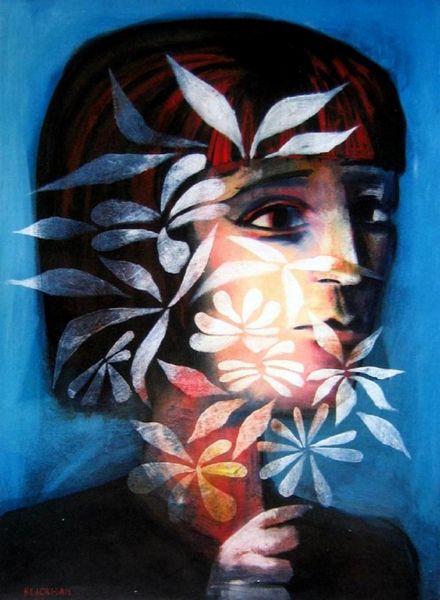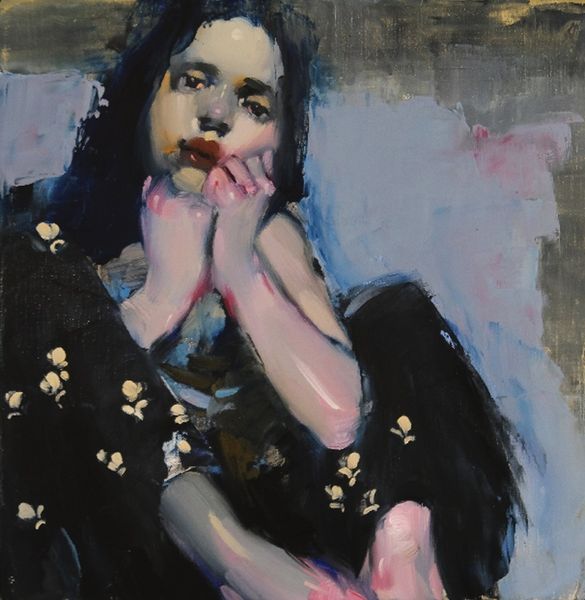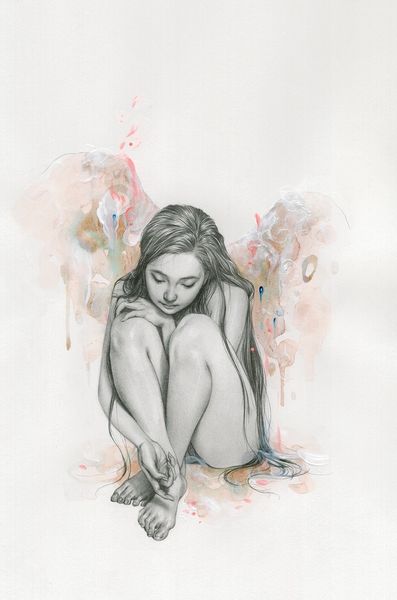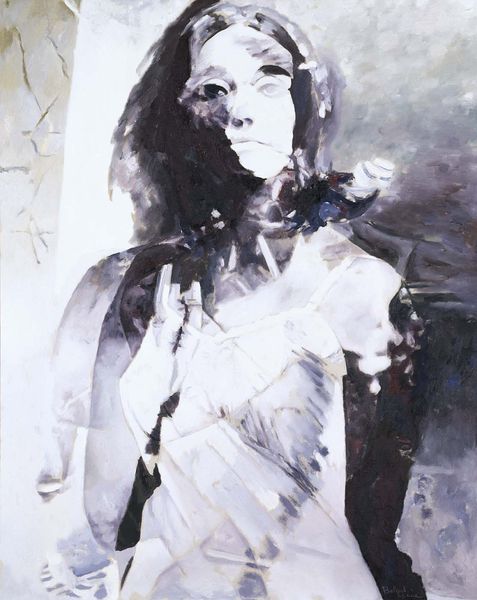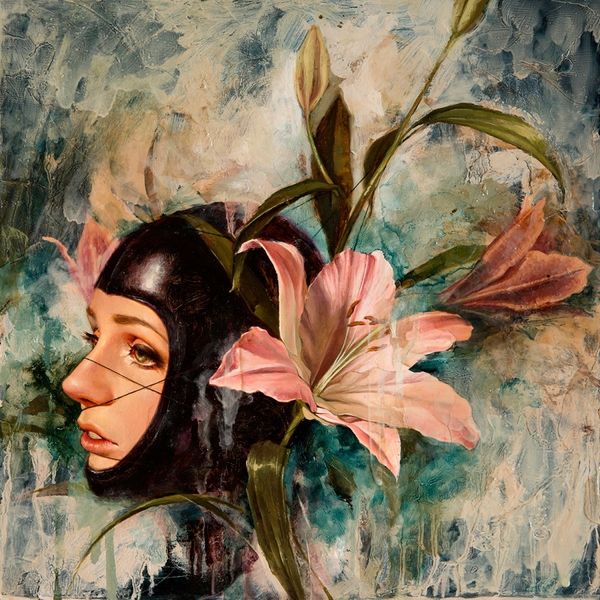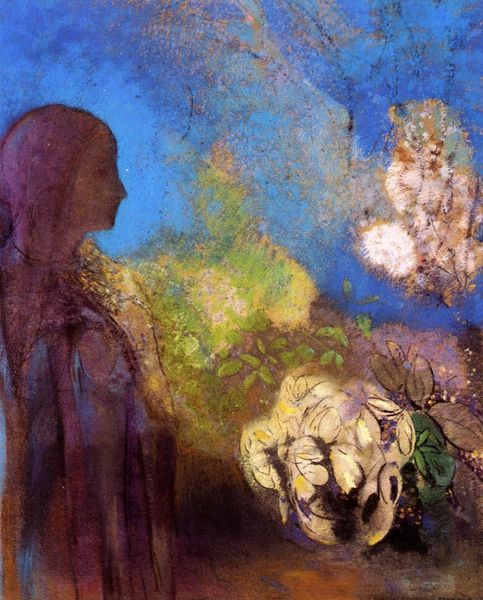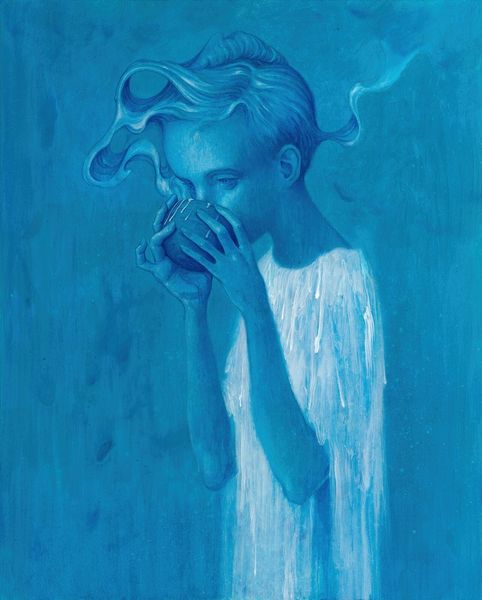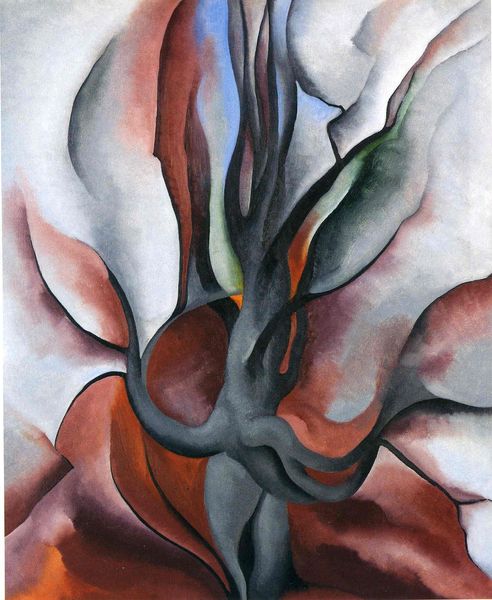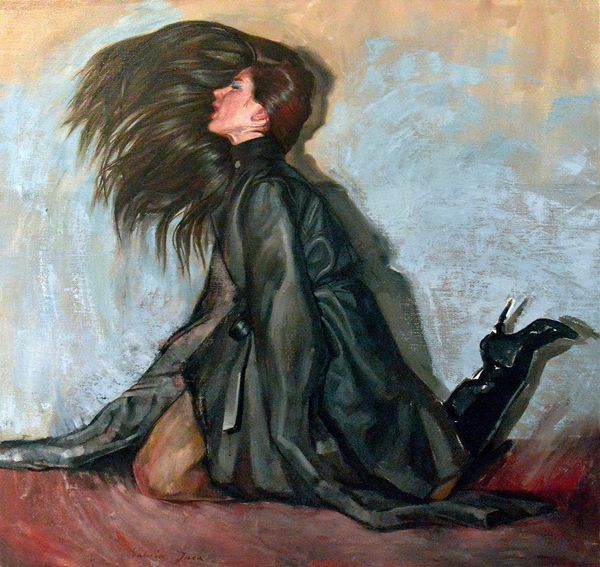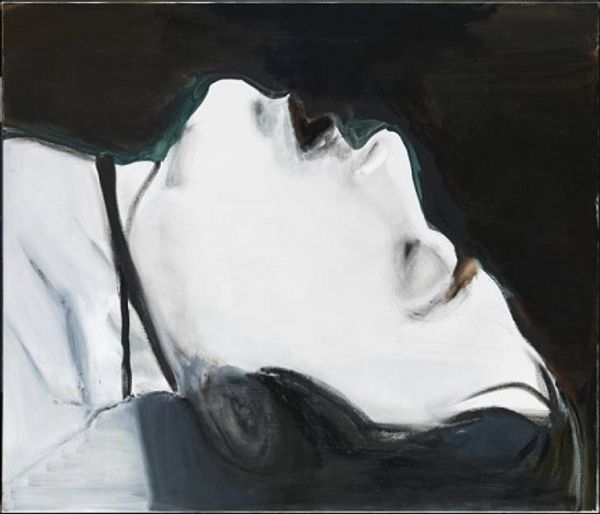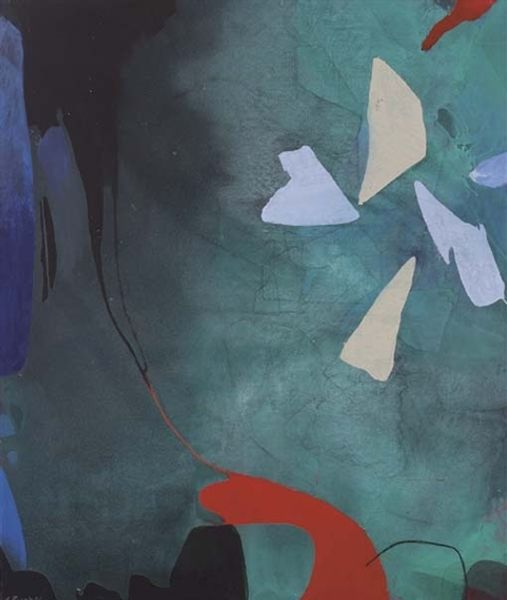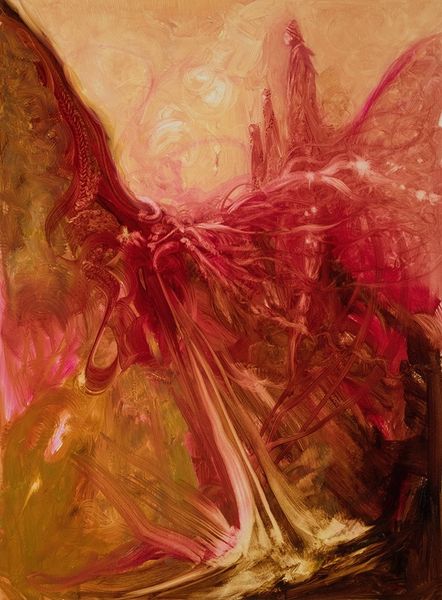
painting, oil-paint
#
portrait
#
painting
#
oil-paint
#
landscape
#
figuration
#
plant
#
portrait drawing
Copyright: Charles Blackman,Fair Use
Editor: This is Charles Blackman's "Woman with Gladioli," an oil painting with a muted palette. There's a pensive, almost melancholic mood. How do you interpret this work in the context of its time and Blackman’s other pieces? Curator: Well, the pervasive greyscale immediately brings to mind the socio-political atmosphere in mid-20th century Australia. Blackman was painting during a time of significant social change. Notice how the flowers, the gladioli, while colourful, seem almost to weigh down the figure, perhaps mirroring the burdens placed upon women in that era. Do you see how the positioning of the face obscures it almost? Editor: Yes, the face almost merges with the background. It's interesting you point that out; could it suggest a struggle for identity within social constraints? Curator: Precisely! Consider the art institutions of the time; they often prioritized a very specific image of women. Blackman, though celebrated, might have been subtly critiquing those norms. He presents the woman not as a symbol of domestic bliss but as someone caught within a more complex, internal world. It becomes not just a portrait but a commentary on the public expectations and private realities. What do you think of that positioning? Editor: It makes you consider what lies beneath the surface. I was drawn to the composition initially but didn't see the cultural implications so clearly. It gives a much deeper appreciation of the work. Curator: Exactly. Art is not made in a vacuum, and exploring those external forces allows us a fuller, more enriching understanding of what’s happening on the canvas. I, too, learn much every time I re-examine the position of an artist.
Comments
No comments
Be the first to comment and join the conversation on the ultimate creative platform.
